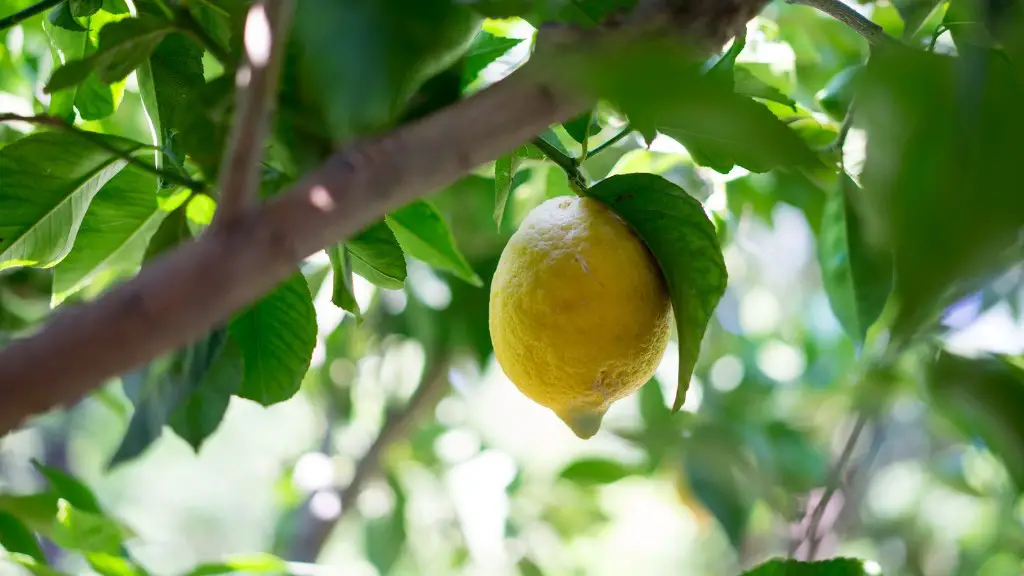When most people think of palm tree removal, they imagine a huge and expensive undertaking. The truth is, however, that the cost of palm tree removal can vary widely depending on a number of factors. The first thing to consider is the size of the tree. A small palm tree may only cost a few hundred dollars to remove, while a large one could run into the thousands. The second factor to consider is the location of the tree. If the tree is in a difficult to reach spot, the cost of removal will be higher. Finally, the type of palm tree also affects the cost. Some palm trees are more difficult to remove than others and will require specialized equipment and expertise, which will drive up the cost.
The average cost for palm tree removal is between $100 and $1,000.
Are palm trees easy to remove?
If you want to remove a palm tree, it’s best to hire a tree removal company. If you do it yourself, be very careful not to damage nearby structures. The best way to remove a palm tree is to dig up the roots or trim it gradually with a chainsaw. Work slowly and carefully to make sure the palm tree comes down safely.
The cost of removing a palm tree will depend on its height. For a palm tree that is up to 30 feet tall, the cost will be between $150 and $450. For a palm tree that is between 30 and 60 feet tall, the cost will be between $200 and $950. For a palm tree that is between 60 and 80 feet tall, the cost will be between $400 and $1,100. For a palm tree that is between 80 and 100 feet tall, the cost will be between $1,100 and $1,500 or more.
How hard is it to dig up a palm tree
If you’re trying to remove a palm tree stump from your property, you may find it more difficult than you anticipated. Palm trees don’t typically have very invasive root systems, but their root balls can be hard to extricate from the ground. You may need to use a combination of physical labor and chemical removal methods to finally get rid of that pesky stump.
There are only 12 species of palm trees that are native to Florida, but all types of palm trees may be subject to local protections and prohibitions on removal without a permit.
When should a palm tree be removed?
If you think your palm tree is infected, it’s important to take action right away. Infections can spread quickly and kill your tree. Look for the following signs of infection:
1. Discoloration or dead leaves: If your palm tree’s leaves are discolored or falling off, it could be a sign of infection.
2. Sunken or misshapen fruit: Infected palm trees may produce sunken, misshapen fruit.
3. Cracks in the trunk: Cracks in the trunk can be a sign that the tree is under stress and may be more susceptible to infection.
4. oozing sap: If you see sap oozing from the tree, it could be a sign of infection.
5. Strange growths: If you see strange growths on the tree, it could be a sign of infection.
If you think your palm tree is infected, it’s important to call a tree professional to have it inspected. Infections can spread quickly, so it’s important to take action right away.
Yes, palm trees are definitely worth money! The Pindo or Jelly palms are especially valued for their potential to bring in significant returns. While they don’t grow excessively large, they are still a great choice if you’re looking for an investment that will definitely be worth your while.
Should you cut down palm tree?
If you need to remove a palm tree, it’s best to hire a tree service. They will know how to safely remove the tree without damaging any surrounding structures. You can also dig up the tree’s roots and save them for replanting, or gently cut it down.
If you have a palm tree, be sure to skin it once a year! This will help the tree stay healthy and avoid any potential problems.
How deep do palm tree roots go down
Palm tree roots are surprisingly shallow, only extending about three feet into the ground. Unlike other trees whose roots grow vertically downward, palm tree roots grow horizontally outward from the initiation zone. This allows the tree to stabilize itself and access more nutrients and water from the surrounding soil.
Removing an individual palm trunk will not allow it to heal itself, as suckering will occur from the root level and new palm tree trunks will eventually sprout and develop. If you want to remove a palm tree trunk, it is best to do so near the root level.
How long will a palm tree stand after it dies?
How long a dead palm tree will stand depends on the type of palm tree. Most palm trees can stand for a couple of months, and some can even stand for a full year, before they fall over.
When tree roots damage a house foundation, it is usually because the roots are seeking out water and nutrients. The roots will grow into cracks and crevices in the foundation, which can lead to serious structural damage. If you suspect that tree roots are damaging your foundation, it is important to have a professional assess the situation.
What trees Cannot be cut down in Florida
Did you know there are laws to protect certain trees? In Florida, mangroves, sea grapes, and some wetland vegetation are protected by statute. This is to protect Florida’s shores and water resources. Other trees, such as large oaks, may be protected by your local municipality.
In the eyes of the state, you can cut down the state tree on your own legally owned property. However, county, municipal or homeowners association laws can still prohibit cutting down the palm.
Why is Florida getting rid of palm trees?
The city is working to reduce its energy consumption by providing more shade on city streets, lowering what’s called the heat island effect. Palms don’t provide much shade. And they capture much less carbon than shade trees like maples or oaks.
If you have a concrete slab foundation, beware of the roots of trees and shrubs growing near your house. They could damage the slab, disrupt your landscaping, or even ruin the structural frame of your house. To prevent problems, keep trees and shrubs trimmed and away from the foundation.
Final Words
The cost of palm tree removal varies depending on the size of the tree and the difficulty of the removal. Removal of a palm tree can cost anywhere from $75 to $1,000.
Based on the removal process, the average cost to remove a palm tree is between $150 and $1,000. The height of the palm tree, the accessibility of the tree, and the amount of equipment necessary to remove the tree are the main factors that affect the cost.





